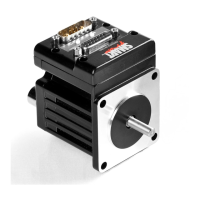Moog Animatics SmartMotor™ Developer's Guide,Rev. L
Page 290 of 909
general-purpose variable, while "A" is the acceleration function. As previously described, any
user variable can be assigned a value through an equation.
All user variables are initialized to the value 0 at power up or on execution of the Z
system-reset command. Other than by direct assignment, this is the only way the SmartMotor
sets all of the user variables to 0. Issuing a RUN command does not perform this automatic
initialization. For this reason, it is better to test a program, whether it is auto-execution or
not, by power cycling the SmartMotor or issuing the Z system-reset command.
NOTE: To understand the relationship between user assigned letter variables a-z,
aa-zz and aaa-zzz, and variable arrays ab[], al[] and aw[], see Array Variable
Memory Map on page 858. The arrays and the letter variables do not overlap in the
Class 5 motor.
RELATED COMMANDS:
R
a...z 32-Bit Variables (see page 241)
R
aa...zz 32-Bit Variables (see page 241)
R
aaa...zzz 32-Bit Variables (see page 241)
R
ab[index]=formula Array Byte [index] (see page 245)
R
af[index]=formula Array Float [index] (see page 261)
R
al[index]=formula Array Long [index] (see page 272)
VLD(variable,number) Variable Load (see page 780)
VST(variable,number) Variable Save (see page 784)
Part 2: Commands: aw[index]=formula

